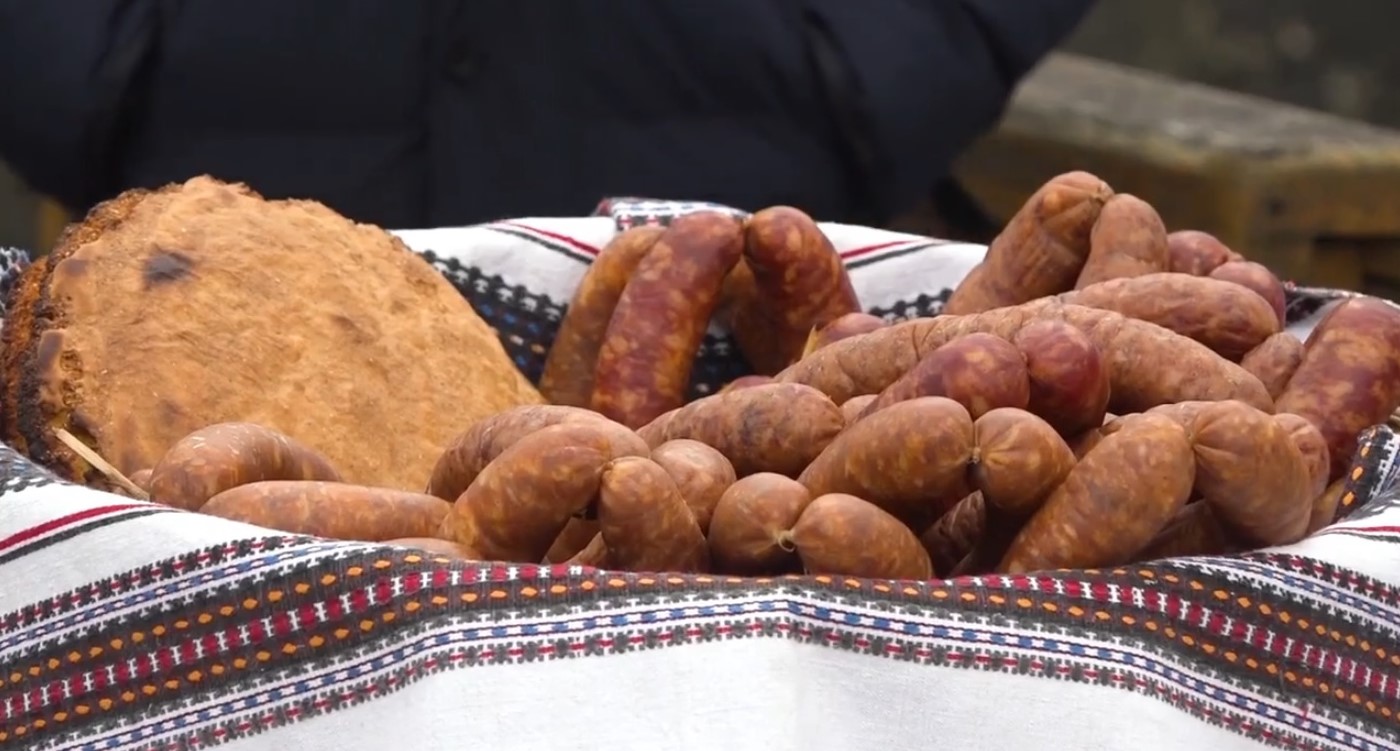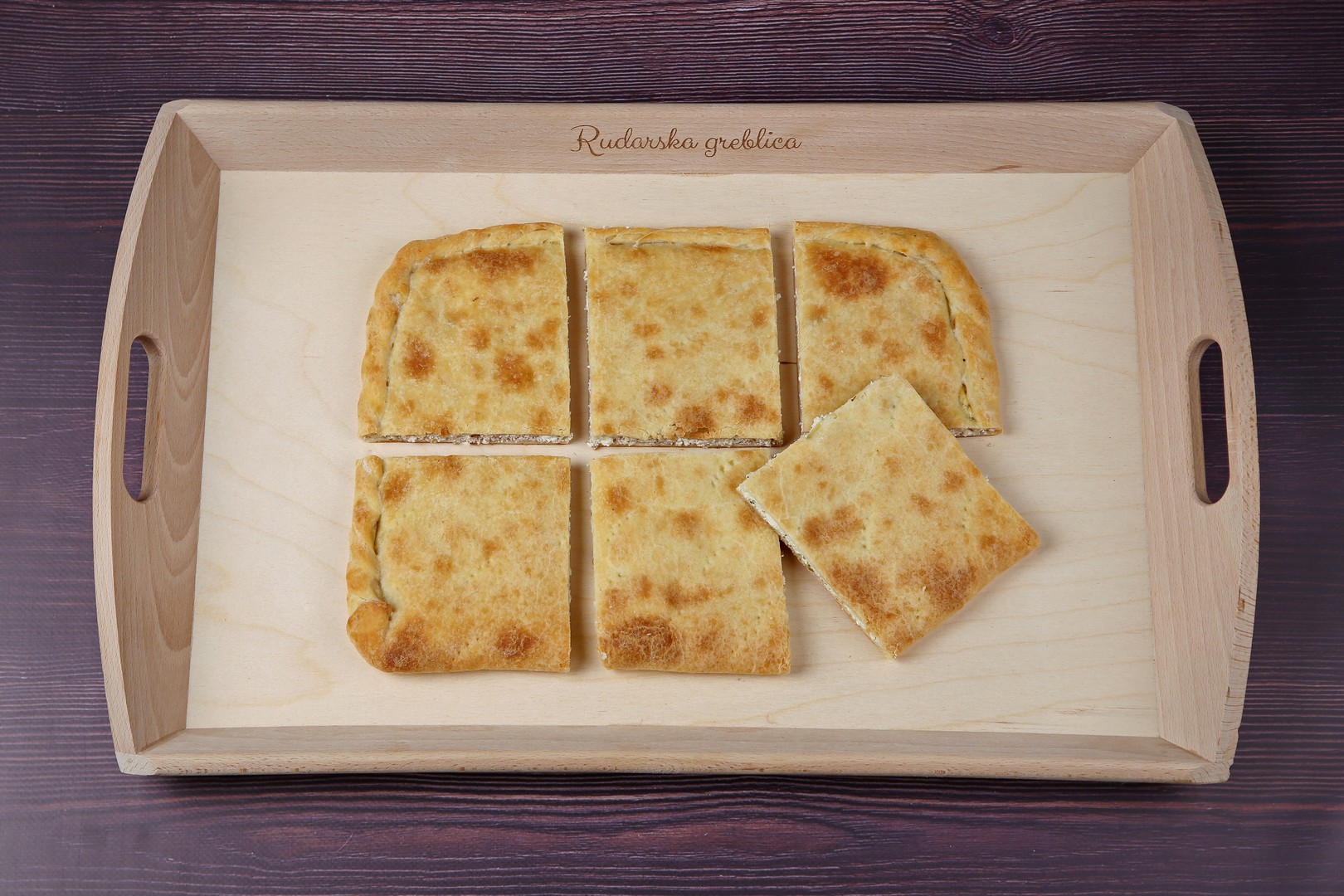Samoborska Cesnofka Becomes Protected Product After Kremsnita and Greblica
February 19, 2021 – In a relatively short period, more good news came from Samobor, both for the citizens of this tradition-rich town and its surroundings and for all local cuisine lovers. Namely, after the Rudarska greblica and samoborska kremsnita, samoborska cesnofka also became a protected product. Enough reason to visit this charming medieval town in Zagreb County this weekend?
Samoborska češnofka, a favorite Samobor garlic sausage, received national protection of geographical origin from the Ministry of Agriculture. This transitional protection at the national level is an essential first step towards gaining the status it deserves on the European gastronomic map.
Tradition of more than a hundred years
When the European Commission decides to protect it on the EU level, samoborska cesnofka will be protected from unauthorized use and misuse throughout the European Union market, just like Rudarska greblica now, a local specialty from Samobor area. However, Samoborska kremšnita entered the Croatian Register of Protected Cultural Heritage.
Samoborska češnofka, named after its main ingredient – a decoction of garlic (in Croatian – češnjak), has been produced for over a hundred years in a specific way from pork, beef, and lard, and a decoction of fresh garlic and dry wine, with each butcher adding its own flair to this recipe. It is eaten with greens, beets, potatoes, and goes best with traditional Samobor cornbread, which will be the next autochtonous Samobor product to get its protection.

The members of the Ethno Fletno Association are working on protecting Samobor cornbread, usually eaten with Samoborska cesnjofka, but also other home-made dishes. / Screenshot Televizija Zapad
A few years ago, the City of Samobor even launched the Češnofka Festival, but due to the coronavirus pandemic, it was not held last year. This year, it will be held if the epidemiological situation allows it. And not only that. On the occasion of protecting samoborska češnofka, the Deputy Mayor of Samobor, Željko Stanec, announced a center for various Samobor tradition guardians.
Samobor gastronomic delicacies available in the "to go" offer
The diligent hands of the people of this region write the history of taste worth experiencing. Although the restaurants are still closed, all the flavors of the Samobor region are available in the "to go" offer in the "K Gabreku 1929 "cellar, the favorite Kavana Livadić, and "U prolazu" confectionery for the well-known kremšnite in Samobor.
Therefore, you can spend this 'almost' spring weekend in Samobor, 30 minutes away from Zagreb's capital, with protected indigenous flavors. This charming town along the Slovenian border dates back to 1242 and the charter by which King Bela IV confirmed the status of a free royal trading post.

Samobor / Zagreb County Tourist Board
Also, Samobor Square is one of the few where all buildings are protected monuments of the first category. Right next to the main square, in the Filipec family tasting room, you can taste another Samobor gastronomic icon – bremet, the most famous liqueur in the Zagreb region. Samobor bermet is an aromatized red wine made from selected varieties of Portuguese and Frankovka grapes with wormwood and southern fruit. The secret recipe dates back to the time before Napoleon.
Zagreb people's favorite excursion destination
This urban pearl of Zagreb County, with its preserved old town, but also with numerous cultural sights, has always attracted excursionists and tourists.
A walk through Samobor comes across the Samobor Museum, the former dock of the composer Ferdo Livadić and a gathering place for cultural greats of that time. The Old Samobor Town ruins, a former castle that watches over the town in the lowlands, hide its turbulent history.
From 1268 until recently, this building was owned by many different families. It used to flourish with life, and now there is only one beautiful monument left to the destructive ravages of time. Over the centuries, numerous nobles and kings were the lords of Samobor-grad, from the Czech king Otokar, who built it in 1268, to Arpadović, Frankopan, Erdody, Matija Korvin, and many other blue blood families.

Ruins of Samobor Old Town / R. Klarić, Zagreb County Tourist Board
As the owners changed, so did this castle. In 1902, the Old Town ended up in Samobor's ownership for 5,293 crowns. Since then, attempts have been made to rebuild it, but no attempt has borne fruit. But maybe even better, because the castle in this form has some magic that it might not have if it wasn't in this state. There is a spirit of the time in it. It hides among the walls and swims among the surrounding trees. This place truly breathes some unique energy. The fort is located in a forest not far from the center of Samobor.
Oh, and did you know that Samobor's Old Town was almost fatal for Jackie Chan, who nearly perished here while shooting the famous film God's Armor?
Oldest mine, nature park, mountain peaks, and educational trails
Only five kilometers away from Samobor, in the Rude village, you can visit the Mine of St. Barbara, one of Europe's oldest copper and iron mines. This small settlement gave rise to the mentioned first protected gastronomic product of the Zagreb County – a crispy salt pie Rudarska greblica, once a modest snack of local miners.

Rudarska greblica / Josip Škof, Zagreb County Tourist Board
Outside Samobor, with a walk in the fresh air, unforgettable views uphill of the Samobor Hills, a protected Nature Park together with Žumberak, await to be discovered. There are many marked trails, and they will satisfy both beginner walkers and ambitious climbers. Although none of them is higher than 1000 meters, the peaks Oštrc, Japetić, and Okić are key places in Croatian mountaineering.
The first trip under the Croatian Mountaineering Association's auspices was organized in 1875 to Oštrc, and the ascent of the writer Dragojla Jarnević on the steep side of Okić in 1843 was Croatian's first recorded alpine venture.
You can add an educational note to the trip by visiting the Budinjak Eco Center and the Educational Trail of Princes, a prehistoric site with a site of old burial mounds, or the Ethno House under Okić. In this rural household, time stood still more than a century ago.

Welcome to Samobor / Josip Škof, Zagreb County Tourist Board
Source: Zagreb County Tourist Board
To read more news from Croatia, follow TCN's dedicated page.
Rudarska Greblica Becomes Protected European Union Brand
February 7, 2021 – The autochthonous Croatian cake Rudarska greblica, originally from the village of Rude near Samobor, was awarded a designation of geographical origin and thus became the first protected gastronomic product in Zagreb County.
In the last few days, the good news does not stop coming from Zagreb County. Namely, after the samoborska kremšnita was recently awarded the status of intangible cultural good, another dessert from the Samobor area – Rudarska greblica – was approved as a protected designation of geographical origin at the European level.
With this label, Rudarska greblica becomes the 29th Croatian product with a protected name in the European Union and the first protected gastronomic product in Zagreb County.
Long history of Rudarska greblica
This dish dates back to the 16th century when the mining industry in Rude was developing and when wives used to make it for their husbands, who were miners. The name "greblica" comes from the traditional ash rake tool called greblica in Croatian.

Rudarska greblica. Photo: Josip Škof / Zagreb County Tourist Board
As reported from Zagreb County, the preparation of the Rudarska greblica was already declared a Croatian intangible good in 2007, when the Ministry of Culture included its preparing process on the list of Croatian intangible heritage. In 2017, the Ministry of Agriculture approved transitional, national protection to the Rudarska Greblica Association, which marks the association's first success.
Right now, three years later, Rudarska greblica became a protected European brand and entered an elite company of 1405 various protected products in European Union.
Rudarska Greblica Association's president, Andrejas Nikl, pointed out that the protection process's incentive was the appearance of different versions of greblica on the market, which deviated from the original dish, which has been prepared in Rude village since ancient times.
Diligent people of Rude (eng. miners), wishing to preserve the tradition, have been organizing the event "Days of Rudarska Greblica" for 35 years. They decided to protect their autochthonous dish and give a stamp to their gastronomic tradition with this goal.
Rudarska greblica – tourist offer of Rude, Samobor, and Zagreb County
"This is a great compliment to the originality and preservation of our tradition, especially when today we have the first recognition for the Rudarska greblica for which the European Union has established the right of intellectual property," said the Zagreb County Tourist Board director Ivana Alilović.

One of the most famous versions is the one with cheese and walnuts. Photo: Josip Škof / Zagreb County Tourist Board
"The Zagreb area has contributed to the Croatian and, as of today, European list of the protected geographical designation of origins. It emphasizes the relationship between a particular geographical region and product name, where the special quality, reputation, or other characteristics of the product can be attributed to its geographical origin. This is primarily a complement to our fellow citizens who did not write history, but lived it," added Alilović.
Rudarska greblica, thanks to the geographical protection it now enjoys throughout the European Union, can be produced exclusively in Rude and surrounding villages and is available at Bakery Nikl, which is the only certified producer of Rudarska greblica.
"Behind the story of Rudarska greblica lies the story of Rude's mining tradition (rudarenje – mining). The Greblica cake was a simple peasant cake that women prepared for their husbands who worked in the mines in the 16th century. Today, the renovated mine of St. Barbara is a tourist attraction of our place, and the protection of Rudarska greblica is an added value to the tourist offer, not only of Rude but also of Samobor and Zagreb County," concludes Andrejas Nikl.

Bakery Nikl is the only certified producer of Rudarska greblica. Photo: Josip Škof / Zagreb County Tourist Board
How to prepare Rudarska greblica
This dish can be best described as a savory pie with cheese filling, neatly wrapped between two thin layers of dough, writes TasteAtlas. The filling is occasionally enriched with other ingredients such as walnuts, green onions, or leeks, and before baking, the whole pie is smeared with sour cream.
Greblica is a prime example of creating something tasty and complex from something simple, which was once associated with poor miners. The most famous version is the one with cheese and walnuts and cheese and greens, such as spinach, chard, or nettles. Sweet variants people of Rude do not accept.
It would be ideal to try it at the "Days of Rudarska Greblica," an event in Rude dedicated to it, but while circumstances still do not allow it, use a recipe for a homemade version.
Rudarska Greblica Receives Transitional Protection of Origin
The Rudarska Greblica Association was approved transitional national protection by the Agriculture Ministry for the cake named Rudarska Greblica through a geographic origin mark. This is the first such protected gastronomy product in Zagreb County


